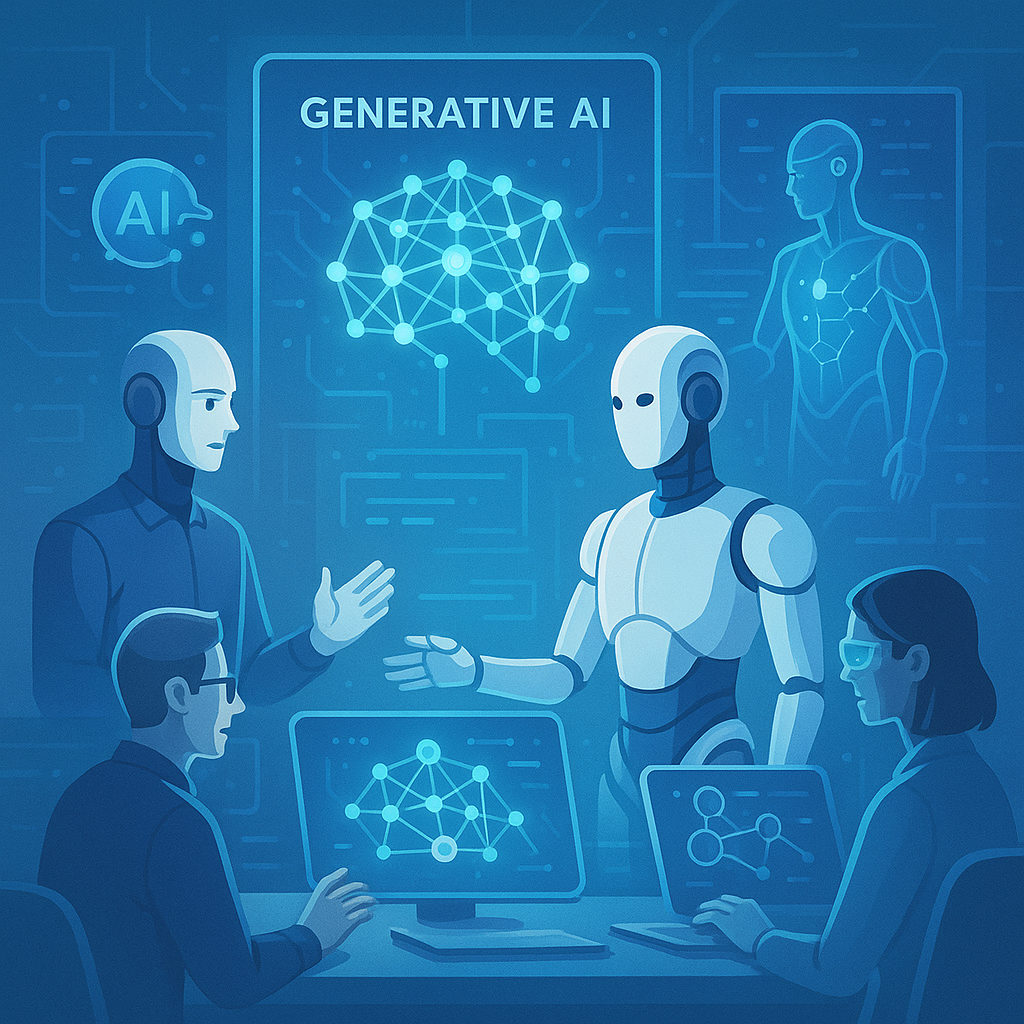In the past few years, AI has grown —and one field that’s taking off is generative AI. While most people know it for making art, writing, or even coding generative AI is now moving into a brand new area: robotics.
So how is generative AI helping engineers and researchers build robots that are smarter and can adapt better? Let’s break this down in simple terms.
🧠 What Is Generative AI?
Generative AI means models that can make new content based on patterns they’ve learned from existing data. It can produce:
- Text (like ChatGPT)
- Images (like DALL·E)
- Music code, and even 3D designs
But beyond creating content generative AI can also come up with solutions, strategies, and even behaviors—which is where robotics enters the picture.
🦾 Better Design and Prototyping
In the past designing robots involved plenty of trial and error. But now generative AI has the ability to create and improve robot parts, movement paths, and control systems on its own.
Use Case:
AI tools such as generative design software have the ability to propose countless robotic arm designs that are optimized to be fast, flexible, or strong—this helps engineers choose the best option more.
🤖 Robots Acquire Behaviors on Their Own
Generative AI allows robots to do more than follow pre-programmed actions. By using reinforcement learning and generative models, robots can:
- Run virtual simulations of thousands of tasks
- Gain knowledge from errors
- Come up with new ways to finish a task
Example:
A robot vacuum can figure out how to clean a room more by creating and evaluating several movement plans rather than sticking to set paths.
🧩 Robots Grasp Language
Generative AI is making robots better at understanding and responding to how people talk. By putting models like GPT into robots, machines can now:
- Do what you tell them even if it’s complicated
- Give you answers when you ask questions
- Talk to you in a way that feels more normal
How It’s Used in Real Life:
Hotel service robots or help desk machines can now chat with folks, get what they’re asking for, and come up with helpful answers right away.
🏭 Industry Automation Gets Smarter
In factories generative AI helps to test and upgrade how things are made. Robots learn from computer-made info to spot mistakes, handle new jobs, or even come up with ways to make things work better.
Bonus: AI can also predict potential issues and come up with fixes before machines even start working on the factory floor—cutting down on time and expenses.
🧪 Large-Scale Testing and Exploring
Robot labs now use AI that creates things to run lots of tests at the same time. They check how robots might move, react, or choose what to do in different places.
This helps with:
- Space robots moving around in unknown areas
- Medical robots adjusting to different operations
- Drones planning routes that are safe and use less power
🔄 Always Getting Better and Learning More
One of the main benefits of generative AI in robotics is that robots can learn non-stop. They have the ability to adjust on the spot and even train themselves again with fresh data, which makes them more resilient and flexible.
🔮 What’s Coming Next for Generative AI and Robotics?
The mix of generative AI and robotics is just beginning, but it shows promise for:
- Quicker robot creation
- Machines that are smarter and can adapt better
- Improved teamwork between people and robots
- Uses in healthcare, shipping, military, schools, and homes
As this tech grows, we might soon see robots that come up with new ideas, fix problems , and fit into our daily lives.
